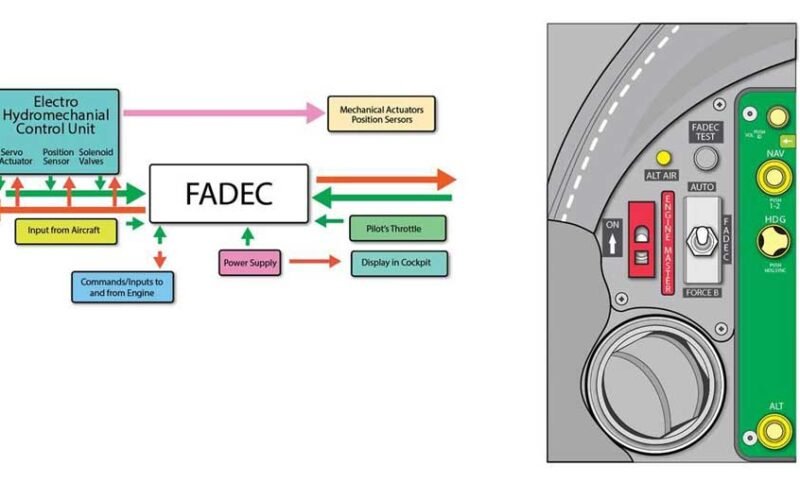1. Introduction to FADEC
FADEC (Full Authority Digital Engine Control) is a critical system used in modern aviation to optimize engine performance. It automates the control of an engine’s various parameters, including fuel flow, airflow, and thrust. Its main goal is to enhance the efficiency, safety, and reliability of the engine by responding to changes in flight conditions in real-time. FADEC systems replace traditional mechanical linkages and pneumatic systems, making them essential for modern engines in both commercial and military aviation.
2. Throughput & Memory in FADEC
The performance of FADEC systems is largely dependent on their throughput and memory capabilities.
- Throughput: FADEC is designed for high-speed data processing, with the ability to process engine data up to 70 times per second. This real-time monitoring and control of engine parameters ensure that the engine performs optimally under different operating conditions. The system can instantly adjust settings such as fuel flow and throttle, making split-second decisions to enhance efficiency, safety, and fuel economy.
- Memory: FADEC systems are equipped with substantial memory to store critical engine data and operational parameters. This allows them to track long-term engine health, log performance trends, and provide essential information for maintenance. The memory also serves to store fault tolerance data, enabling the system to react quickly to anomalies and ensuring continuous safe operation, even in the case of partial system failure.
3. Functions and Control
FADEC is responsible for a broad range of functions that ensure the smooth operation of an aircraft’s engine. These include controlling fuel flow, monitoring temperatures, pressures, and other important parameters. The system continually adjusts settings to optimize fuel efficiency and engine performance while maintaining safety margins. By removing manual control, FADEC reduces the likelihood of human error and ensures the engine operates within safe and efficient parameters at all times.
4. Advantages and Disadvantages
- Advantages: FADEC offers several key benefits to both the aircraft and its operator. It significantly improves fuel efficiency by optimizing fuel delivery in real time. The system provides enhanced safety through continuous monitoring and fault tolerance. Additionally, FADEC contributes to reduced engine wear by precisely controlling parameters, prolonging the life of the engine. It also simplifies cockpit operations, allowing pilots to focus on other critical tasks during flight.
- Disadvantages: Despite its many benefits, FADEC is not without drawbacks. The complexity of the system means that maintenance and troubleshooting can be more difficult compared to traditional mechanical systems. In the event of a FADEC failure, there may be limited manual control, making recovery from a failure more challenging. Additionally, the reliance on high-tech electronic systems may make the engine more vulnerable to cyber threats or other technical issues.
In conclusion, FADEC is a transformative system in aviation, offering exceptional throughput and memory capabilities that improve engine efficiency, safety, and longevity. While it presents some challenges, its advantages in modern aircraft operations cannot be overstated.










